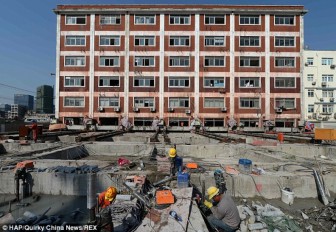Finland: Demolition of older buildings harms both the environment and the economy

The rate of building demolitions in Finland has nearly doubled in just ten years, despite evidence that renovation is often significantly cheaper and less environmentally damaging than demolition and new construction. A study released in late April by the Häme Centre for Economic Development, Transport, and the Environment (Ely) and the Ministry of the Environment found that local planning processes often overlook the preservation of old buildings.
For example, in Lahti's city center, numerous buildings, including an old healthcare center, a kindergarten, a department store, and other commercial spaces, have been demolished recently, making parts of the city look like a vast demolition site. Overall, while just over 4,000 buildings were demolished in Finland in 2010, that number doubled to 8,000 last year.
It should be mentioned that the construction industry in Finland is responsible for a third of the country’s climate emissions and generates the second largest amount of waste after mining, while construction consumes half of all exploited natural resources. Moreover, demolition and rebuilding are often more expensive and result in the loss of historic buildings and architectural styles.
A spokesman from Häme Ely Centre stated that people often misjudge the fact that new buildings are better than the older ones, but the mindset must be changed, and the construction industry should be able to appreciate the potential of older buildings for repair and reuse.
From a financial perspective, the situation is also concerning. The Environment Ministry indicates that with over 80 percent of Finland's national wealth invested in buildings, maintaining these structures to prevent unnecessary demolition is financially prudent.
Specifically, in 2021 a study conducted by the VTT Technical Research Centre of Finland compared the costs of renovating versus demolishing and rebuilding a school in Helsinki. The study found that over a 50-year lifecycle, demolishing the old building and constructing a new one would be nearly 20 percent more expensive than renovating the existing structure.
In practice, as Senior Specialist at the Ministry of the Environment, Lyra Annukka, referred that demolition can only be prevented if a building is classified as protected, which can limit its future use. Lyra also mentioned that Finnish officials are considering reducing land use fees or property taxes for sites where buildings are preserved rather than demolished, but no final decision has been made yet.
In all, a strategy that could solve many issues is to repurpose older buildings. Lahti's city architect, Johanna Palomäki, emphasizes the need to accept minor inconveniences that arise when a property is repurposed for something other than its original use.
Want to read more like this story?

Wall collapse in New York’s demolition site: 1 fatality
Feb, 20, 2020 | NewsA wall failure in a New York’s demolition site resulted in one fatality and one injury. The constr...

4 Dead in Nigerian Building Collapse
Nov, 09, 2013 | NewsA four-story residential building under construction in one of the most expensive communities in Afr...

27 Dead in Two India Building Collapses
Jul, 01, 2014 | NewsTwo deadly building collapses occurred in India this past weekend claiming the lives of 27 people. T...

19 buildings demolished at once in Central China (video)
Jan, 27, 2017 | NewsTo make way for a new business district in the city of Wuhan (formerly known as Hankou) in Central C...

Property owner Wanted to Save Rhode Island’s Tallest Building
Feb, 11, 2014 | NewsThe owner of Rhode Island’s tallest building renewed his effort on Monday to gain support for a publ...

Historic structures are relocated in China due to urbanization
Apr, 03, 2017 | NewsIn the last twenty years, China’s urban population has more than doubled and aggressive development...
ACE
Dec, 06, 2013 | Software
A 7-storey building collapsed in Istanbul, Turkey
Jun, 27, 2024 | NewsOn June 27, a seven-storey building collapsed in Istanbul, Turkey. The incident occurred in the Zaf...
Trending

Spectacular interchanges around the world

New Release - STAAD.Pro 2024 - 2

ADINA 2025 for Structural WorkSuite

ADINA 2025 New Release!

Concrete Buildings as Rechargeable Batteries

Powerful earthquake shakes central Philippines, dozens killed

Indonesia school collapse: three fatalities and dozens injured

